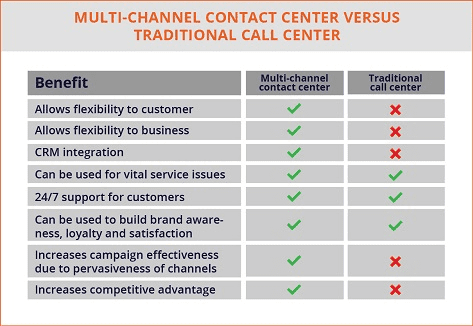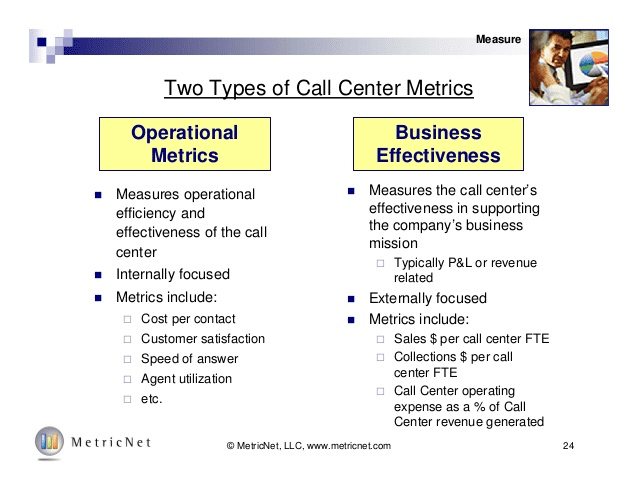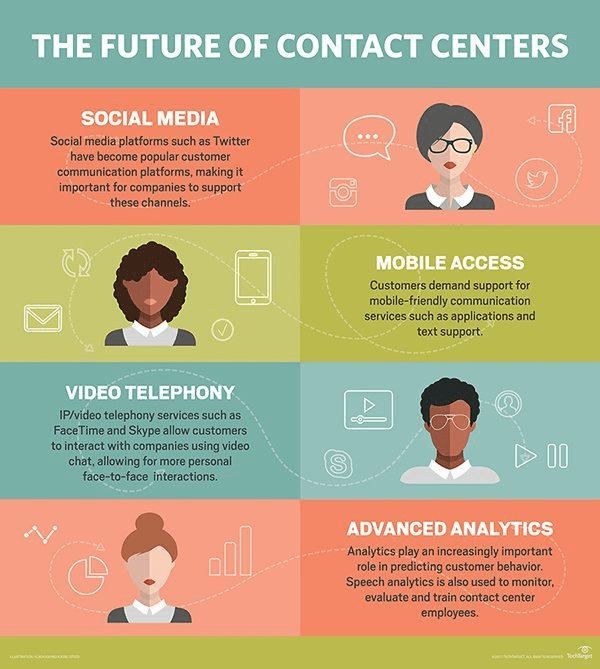You've heard the jargon, but do you really know the difference between a contact center and a call center?
In the 1960s, the invention of automatic call distribution (ACD) systems made hiring and training customer service reps to handle incoming phone calls at volume cost-effective for the first time. This innovation—made possible through machines that route inbound calls to multiple agents based on their availability or expertise—was called a “call center."
Gartner defines a contact center as a team (or group of teams) that interacts with customers across a range of channels, including phone calls, SMS, email, live chat, and social media.
Call center agents offer support or sales only over the phone. If your agents handle requests and make contact with users or customers through any other channel(s), you're running a contact center.
Below, we'll dive deeper into the differences between call centers and contact centers. We'll also discuss how operational costs, hiring, and KPIs differ between the two, and how call and contact center managers can improve in these three areas.

Differences between call centers and contact centers (via source)
Operational costs: call centers vs. contact centers
The cost of operating any department often includes hiring and training, payroll and benefits, hardware, software, and facilities.
A contact center has an operational cost advantage over a call center in that allowing customers to choose between multiple support channels can reduce telecom expenses without necessarily decreasing customer satisfaction.
Tips for managers
One of the best ways to save on operational costs? Automate what you can.
For call centers: This could be adding a plug for your self-service option to your recorded message. Alternatively, you can use Interactive Voice Response (IVR) software to replace phone trees with a script that asks callers to say their question or problem. These programs use Natural Language Processing to parse what customers are saying and offer solutions.
For contact centers: You can automate internet support cost-effectively through chatbots. (Check out "Should Small Businesses Actually Use Chatbots for Customer Service?" if you're wondering if this option is a good one for you.) When you're ready to buy, Capterra's live chat software and AI software directories can help you find the best option for your business.
For both: You can save on operational costs by using software to identify customers and give agents relevant customer data (such as past purchases) on their screens as soon as communication begins. When evaluating live chat software or call center software with IVR, look for systems that offer this information automatically upon customer self-identification.
This functionality can significantly reduce average call times, simplify your agents' lives, improve information security, and save your customers time and frustration (as they have to explain less to get the help they need).
Differences between call centers and contact centers
Hiring and training: call centers vs. contact centers
Hiring and training for a contact center is, as you might have guessed, more complicated than hiring and training for a call center.
Customer service reps at a contact center must be trained to provide online customer service through multiple channels. Supporting more channels means looking for potential hires with experience in each channel you offer, and offering a greater variety of training post-hire.
Tips for managers
On the Contact Center Pipeline blog, Jeff Canter advises companies to consider using a gamification platform for training and improving future performance:
"These tools will help keep your agents focused and engaged in their work, and can help provide a sense of individual contribution and value as agents compete and receive recognition, rewards and earn the respect of their coworkers."
When combined with healthy competition and rewards, showing agents their individual performance against key performance measures in real time can be a great motivator.
When looking for call center software, ask vendors whether they have gamification functionality built in. Many contact centers use help desk software, and a good portion of available systems offer gamification functionality.
Keep in mind that many managers have found that personality is even more important than experience or technology when it comes to hiring successful customer service agents.
This is true for call centers and contact centers alike. Tools and tech can be taught more easily than disposition and attitude.
Learn more: 5 Tips for Hiring The Best Customer Service Employees
KPIs: call centers vs. contact centers

Call center metrics (via source)
There are lots of key performance indicators for managers of call centers and contact centers to measure. Some of them are shared (customer happiness), while others are more channel-specific (average hold time).
How do you decide which KPIs are worth measuring? Whether you're operating a call center or a contact center, you should always start with customer happiness.
Tips for managers
While contact centers can have lower operational costs than call centers, it's important to keep in mind that costs aren't everything.
When it comes to the health of any small business, one of the most important metrics measures how happy your customers are with your company.
Measuring customer happiness—no matter which support channels you offer—is the only way you can be confident about whether (and how) changes you and your employees make improve or worsen customers' experience with your brand.
If you're lowering operational costs by cutting phone support or making it more difficult to obtain help through complicated phone trees and long wait times, you may not be acting in a way that will make your business healthier over the long term.
Sure, it's expensive to offer support. But it's even more expensive to acquire new customers.
Once you know where you stand with your customers, you can choose which other KPIs to measure based on the impact you think they'll have on customer happiness.
Learn more:

The future of contact centers (via source)
Bottom line: Call centers and contact centers have more commonalities than differences
Let's recap three tips for call center and contact center management success:
1. Automate what you can to lower operational costs
AI software can help you automate live chat conversations, while call center software with IVR can help your phone agents save time.
2. Gamify your agents' jobs
When looking for call center software or help desk software, ask vendors whether they have gamification functionality built in.
3. Measure customer happiness
If your call center software or help desk software doesn't have customer surveys built in, look into customer experience software.
All of the above-linked Capterra directories can help you compare your options and filter by feature to ensure you're using the right software for your business, regardless of whether you're managing a call center or a contact center.